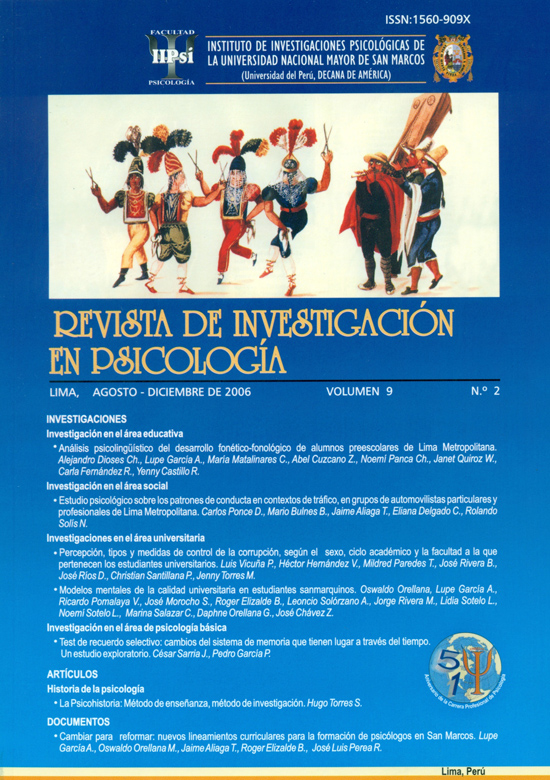Perception, types and control measures of corruption by gender, academic year and faculty that university students belong
DOI:
https://doi.org/10.15381/rinvp.v9i2.4021Keywords:
corruption, attribution, concepts of corruption, types of corruption, solutions to the corruptionAbstract
The present study deals with the form like the college student they conceptuan to the corruption, identifies corrupt acts within its faculty and propose solutions, in function to sex, cycle and academic faculty to which they belong. The sample was of 931 representative to the 0,03 of error margin, distributed by academic faculties. The selected sample randomly, answered a questionnaire of three questions, previously validated semantically; soon in greater groups of ten students it was not talked about his answer with the intention of knowing the trustworthiness the same ones, finding a correlation of the 0,90 between the opinions deepened in the dynamic session with his answers written in the questionnaire. They excel results, with respect to the concept of the corruption: 8% say that it is transgression of norms, to 11% abuse of office, 15% like a crime, for 9% is a disease, for 37% beneficial personnel. Between the perceived corrupt acts they attribute to the abuse authority of the bureaucracy 33%, 9% to illicit enrichment and students who pay briberies respectively, 8% abuse authority of the educational one. In the solutions to control the corruption they propose: 19% education in values, 13% controlling, 8% transparency, change of system, individual change and awareness, respectively, 7% application of restrictive measures. These data differ in function to sex neither to the cycle nor to the academic faculty to which they belong.Downloads
Published
Issue
Section
License
Copyright (c) 2006 Luis Vicuña P., Héctor Hernández V., Mildred Paredes T., José C. Rivera B., José Ríos D., Christian Santillana P., Jenny Torres M.

This work is licensed under a Creative Commons Attribution-NonCommercial-ShareAlike 4.0 International License.
THE AUTHORS RETAIN THEIR RIGHTS:
a. The authors retain their trademark and patent rights, and also on any process or procedure described in the article.
b. The authors retain the right to share, copy, distribute, execute and publicly communicate the article published in the Journal of Research in Psychology (for example, place it in an institutional repository or publish it in a book), with acknowledgment of its initial publication in the Journal of Research in Psychology.
c. Authors retain the right to make a subsequent publication of their work, to use the article or any part of it (for example: a compilation of their work, lecture notes, thesis, or for a book), provided that they indicate the source. of publication (authors of the work, magazine, volume, number and date).






